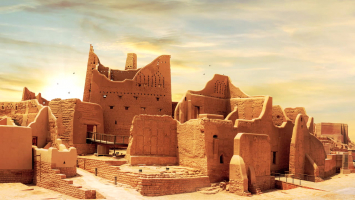Top 10 Most Beautiful Historical Sites in Puerto Rico
In August 2021, after the United States recovers from COVID-19, both the federal and state governments appear to be in favor of implementing new taxes to ... read more...compensate for the governmental revenue loss caused by the epidemic. These trends, which are exacerbated by growing progressive tendencies in Congress and many state legislatures, may be concerning for high-net-worth individuals. As a result, many of these people have chosen to relocate in quest of reduced taxes. Puerto Rico, a gorgeous U.S. territory in the Caribbean sea that offers its people all the privileges of U.S. citizenship as well as a pleasant lifestyle and rich history, is one of the most popular low-tax destinations. This article examines the top ten most beautiful historical sites in Puerto Rico that you can visit during your vacation.
-
Known as one of the most beautiful historical sites in Puerto Rico, the Centro Ceremonial Indgena de Tibes is another important Tano archeological site on the Island's coastal south side, located in Ponce, about an hour and a half drive from San Juan. Evidence of pre-Tano civilizations was discovered during intense rains and river flooding in 1975. Seven batteries, two ceremonial plazas, and hundreds of bone constructions and implements were discovered during excavations in the area. Several weapons, clay artifacts, and statues symbolizing deities, or comes, are on display at a museum in the park. A bilingual one-hour tour that includes a visit to the museum and a film can be arranged.
The site's greatest period of occupation, according to archeological examination and radiocarbon dating, was from 400 to 1000 AD. Several stone-lined courts/plazas are shaded by native trees on the site. Tainos are thought to have been the last people to live on the site. The Tibes Indigenous Ceremonial Center is one of the Caribbean's largest and most prominent indigenous sites, as well as Puerto Rico's largest ceremonial site. This is also thought to be the Antilles' oldest astronomical observatory, based on the orientation of the ceremonial plazas. The museum first opened its doors in 1982 and was restored in 1991.
Location: Ponce, Puerto Rico
Timing: 8:30 am - 3:00 pm
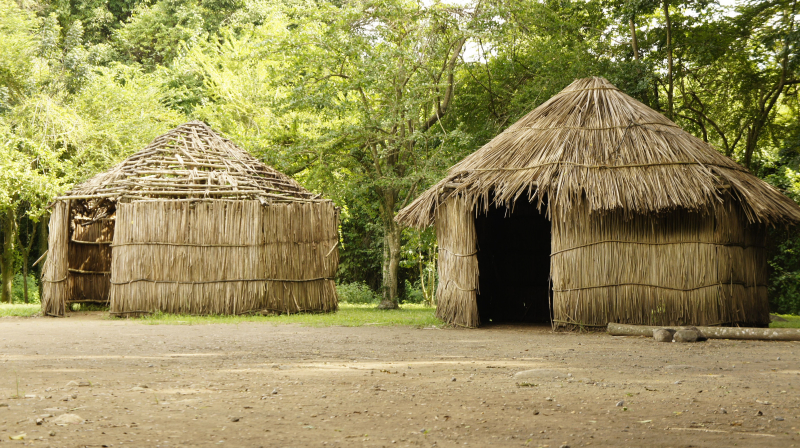
Photo: https://www.pinterest.es/ 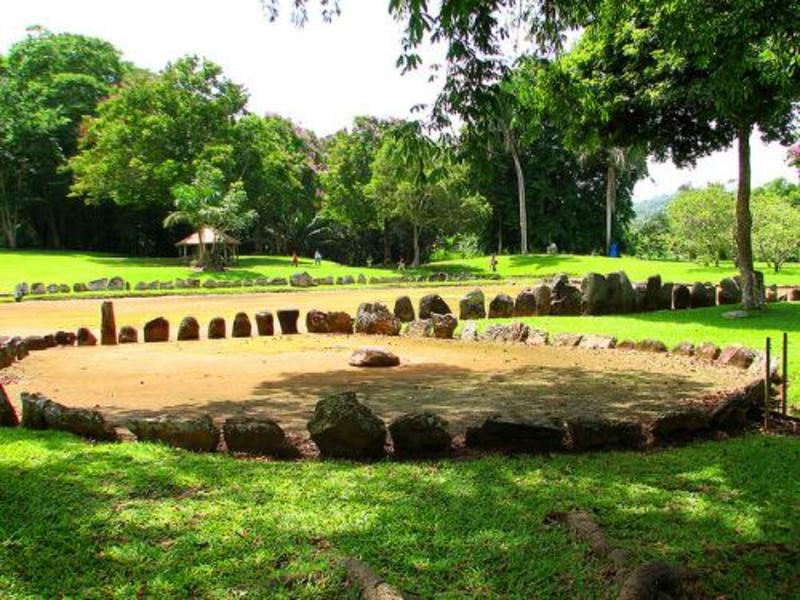
Photo: https://enciclopediapr.org/ -
The Castillo San Felipe del Morro, Castillo San Cristobal, most of the city walls, la Puerta de San Juan, and the Fort San Juan de la Cruz are all part of the San Juan National Historic Site. El Morro, a UNESCO World Heritage Site and a remarkable tribute to Puerto Rico's glorious heritage, is the island's most well-known landmark and a must-see if you're short on time and trying to decide which attractions to see.
El Morro was built in the 16th century to keep the Spanish conquistadores out of the San Juan harbor entrance. In the New World, it served as a defensive posture and saw several conflicts against foreign powers and pirates. The views of the city and the ocean from the fort are breathtaking. Before you leave, fly a kite in the vast green fields outside of El Morro, take a deep breath, and relax under the magnificent blue skies — this is a once-in-a-lifetime opportunity.
To get to El Morro, you'll have to hike up a route that spans the fort's massive grass. The National Park staff who charge the entrance fee greet you at the entrance. Park rangers conduct tours of the fort in both English and Spanish, but you're also welcome to explore the various floors and rooms on your own. The troops' quarters, kitchens, and other facilities are re-created in each segment. The importance of Puerto Rico as a vital access point to the Americas, as well as the evolution of El Morro and its weaponry throughout the last five centuries, are vividly depicted in informative presentations.
Location: Old San Juan, Puerto Rico
Timing: 9:00 am - 6:00 pm
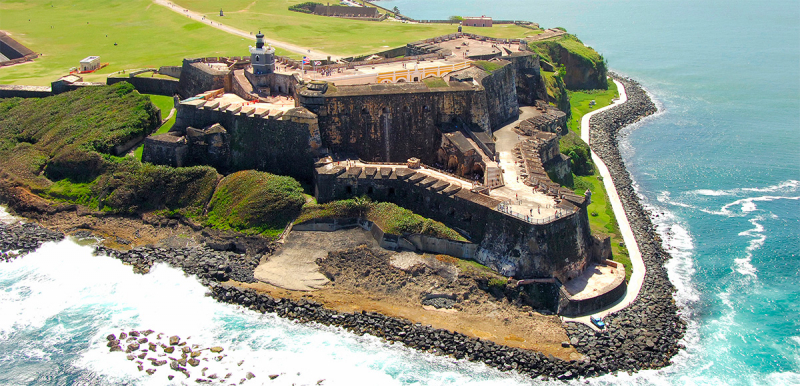
Photo: https://boricuaonline.com/ 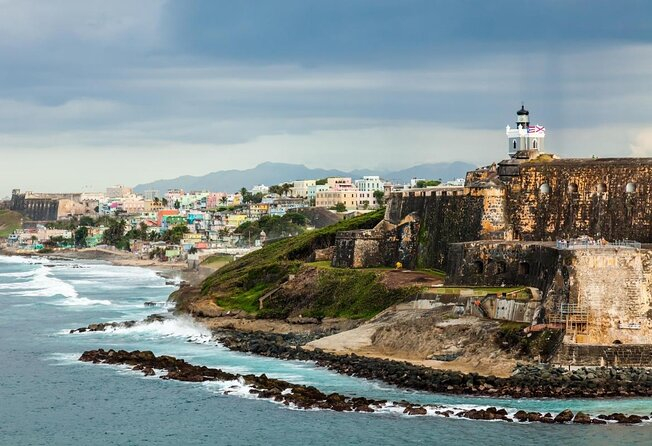
Photo: https://www.viator.com/ -
The governor of Puerto Rico's official residential palace is La Fortaleza. It is one of the most beautiful historical sites in Puerto Rico. The mansion was built in the 1500s and has served as a prison, a fortification, and an armory before becoming the governor's residence. Because this structure is still used by the government, tours are only available during working hours. Anyone interested in knowing more about Puerto Rico should pay a visit to this landmark.
It was constructed between 1533 and 1540 to protect San Juan's harbor. It is the New World's oldest executive residence in continuous use. It was added to the World Heritage Site "La Fortaleza and San Juan National Historic Site" by UNESCO in 1983. The chapel of Santa Catalina, which had previously stood outside the walls, was merged into the walls of the fortress during the 1640 renovation, earning it the alternate name Santa Catalina's Castle.
It has served as the official governor's residence for centuries and has hosted more than 170 leaders, making it the New World's oldest executive mansion. On weekdays, it's open from 9:00 a.m. until 4:00 p.m. There is no price to enter.
Location: Old San Juan, Puerto Rico
Timing: 9:00 am - 4:00 pm
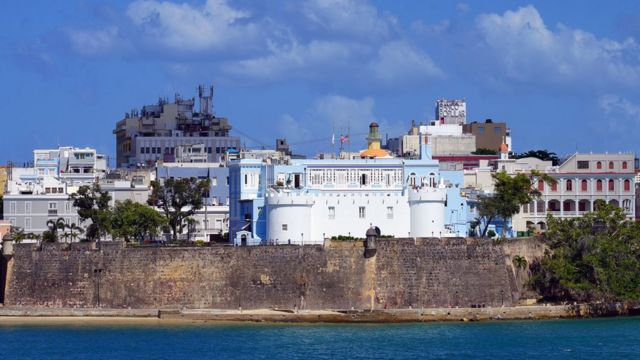
Photo: https://www.bbc.com/ 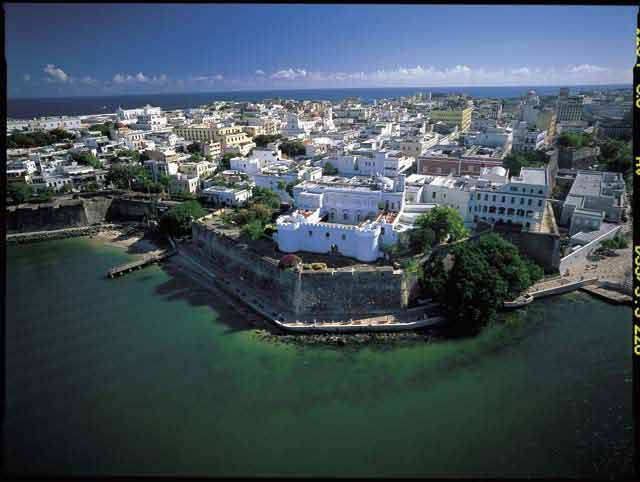
Photo: https://www.pinterest.com/ -
The San Cristóbal fortress is located in the city of Gracias, department of Lempira, and is built on a small hill above the city, which was once the center of the town of Gracias Lempira, which was once the capital of New Spain and the headquarters of the Real Audiencia de Los Confines in 1544; Gracias was a strategic city within the Province of Honduras during the colonial era, then during the pro-independence
The San Cristóbal Fort, which covers 27 acres of land and was built in 1634 to protect San Juan from land attacks, is the largest Spanish fort in the Americas. On the hill "San Cristóbal," the earliest building of Spanish origin was constructed in the seventeenth century, and two cannons with the insignia of King Carlos IV of Spain have survived. You can view a brief film on the fort's history at the start of the trip, and you can listen to an hourly staff orientation. Inside, you'll find the main plaza, which is used for military formations and training, as well as a church, troop quarters, and tunnels for soldiers and weaponry. The observation platform on the third level offers a stunning view of the ocean and city.
Location: Old San Juan, Puerto Rico
Timing: open all day

Photo: https://www.discoverpuertorico.com/ 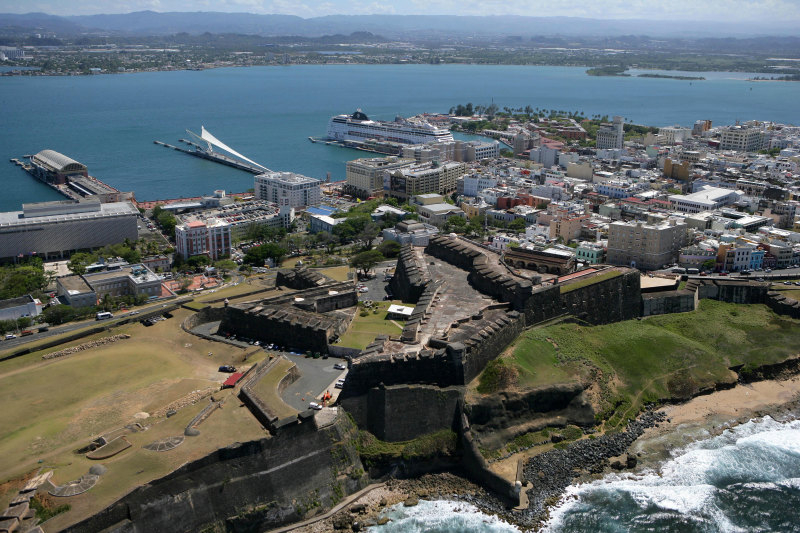
Photo: https://www.discoverpuertorico.com/ -
The Cuartel de Ballajá was the Spanish army's final piece of massive military architecture in the Americas. The Cuartel de Ballajá, which stands in front of Castillo San Felipe del Morro, was built between 1854 and 1864 to house the Spanish and Puerto Rican regiments in Old San Juan. The US soldiers occupied the Cuartel de Ballajá until 1936, following the US Army's invasion in 1898. This edifice served as a hospital during WWII, and it was purchased by the Puerto Rican government in 1976. This lovely edifice was eventually abandoned and quickly decayed. Ricardo Alegra, a renowned Puerto Rican archaeologist, proposed remodeling the Cuartel de Ballajá and creating a museum dedicated to the Americas in 1992, as part of the commemoration of the 5th Centenary of the trade between Europeans and the original peoples of the Americas.
The Ballajá Barracks now hosts several educational and cultural institutions, including the Museo de las Américas, which has been located on the second level of the structure since 1992. There are music and dance schools, as well as a library, on the first level. The permanent collections of the Museo de Las Américas are African Heritage, Indians in America, and Popular Arts in America.
Location: Old San Juan, Puerto Rico
Timing: Open all day
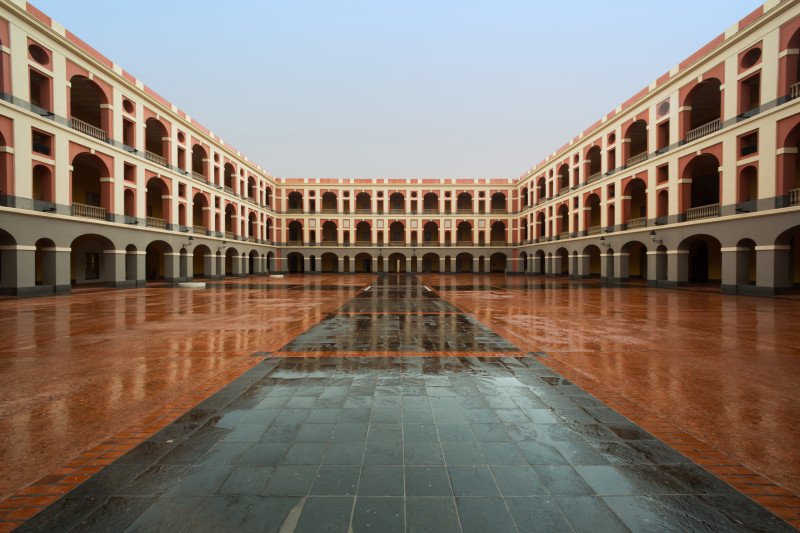
Photo: https://www.discoverpuertorico.com/ 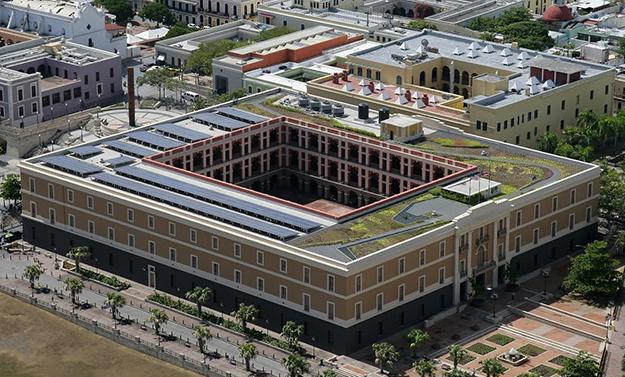
Photo: https://www.80grados.net/ -
The Capitol of Puerto Rico (Spanish: Capitolio de Puerto Rico) is located just beyond the walls of Old San Juan on the Islet of San Juan. The bicameral Legislative Assembly, which consists of the House of Representatives and Senate, meets in this edifice. The structure is located in San Juan Puerta de Tierra neighborhood. The Palace of the Laws is another nickname for the Capitol (Spanish: Palacio de las Leyes).
El Capitolio de Puerto Rico is a prominent emblem of self-government for Puerto Ricans. Luis Muoz Rivera, a former resident commissioner of Puerto Rico, first advocated for the construction of a capital building in 1907. Later, he was the driving force behind the capital building's construction between 1925 and 1929. The structure was dedicated on February 11, 1929, and the Legislative Assembly held its inaugural meeting three days later. El Capitolio de Puerto Rico was added to the National Register of Historic Places in 1977. In this marble-clad three-story structure, local state senators and representatives convene to pass legislation. A Rotonda in the center displays the Commonwealth of Puerto Rico's Constitution, which is protected by high ceilings with mosaics depicting significant historical events.
Location: Old San Juan, Puerto Rico
Timing: 8:30 am - 5:00 pm
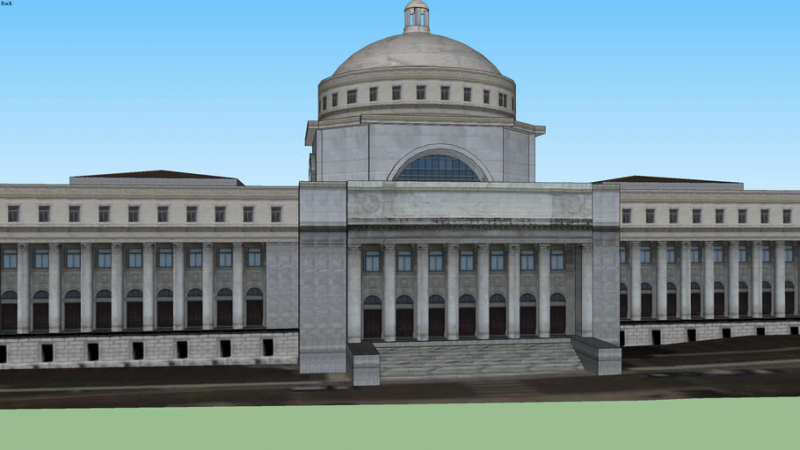
Photo: https://3dwarehouse.sketchup.com/ 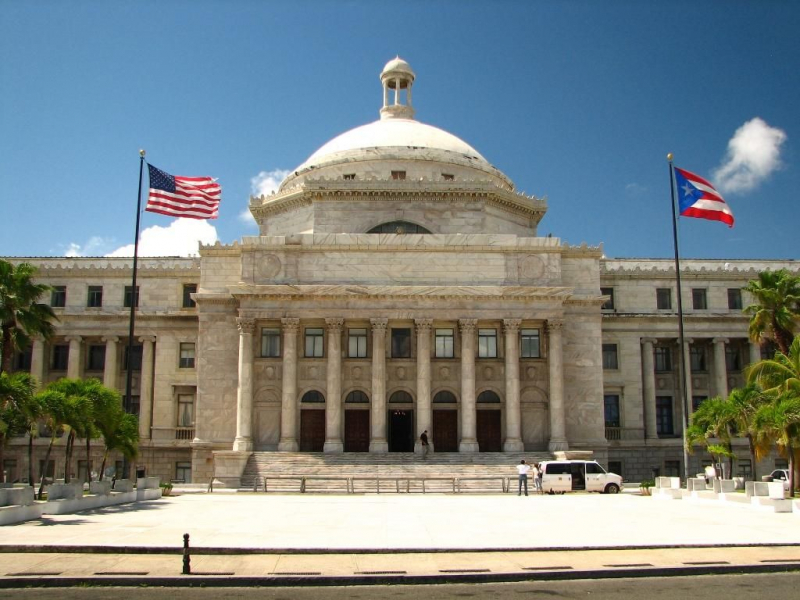
Photo: https://www.pinterest.es/ -
The Hacienda Buena Vista in Ponce illustrates the legacy of the island's coffee manufacturing during its heyday, over 150 years ago. A Spanish colonial main house, slave quarters, farm buildings, and other processing areas make up the restored historical site. This hacienda was a major coffee producer in the nineteenth century, yielding some of the best beans available. The main engine, which is powered by the water of a local river, is powered by original hydraulic turbines. Plantation owners and slaves had an important part in the manufacture of goods, as well as the harvesting and processing of cocoa, coffee, and other local products, according to current guided tours.
Ascend to the highlands and take the trek to Hacienda Buena Vista's name-giving waterfall. What was formerly a significant coffee plantation was also the site of a unique land-water-slavery nexus. Today, the ancient hacienda's center is a meticulously restored historical landmark with structures dating back over a century and a one-of-a-kind hydraulic turbine. The turbine, which has been completely repaired, is still powered by Ro Canas water and serves as the principal engine for other machinery of the time. Because space is limited, please make a reservation in advance online or over the phone. On request, more dates are available for groups.
Location: Ponce, Puerto Rico
Timing: 8:00 am - 4:00 pm
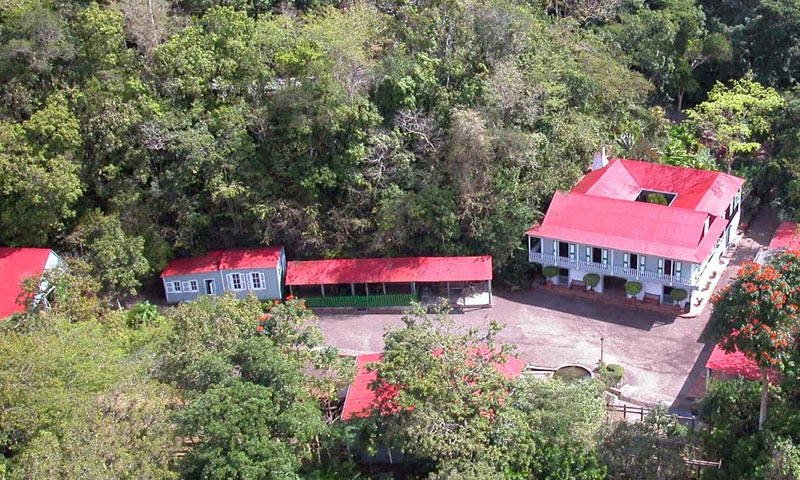
Photo: https://www.paralanaturaleza.org/ 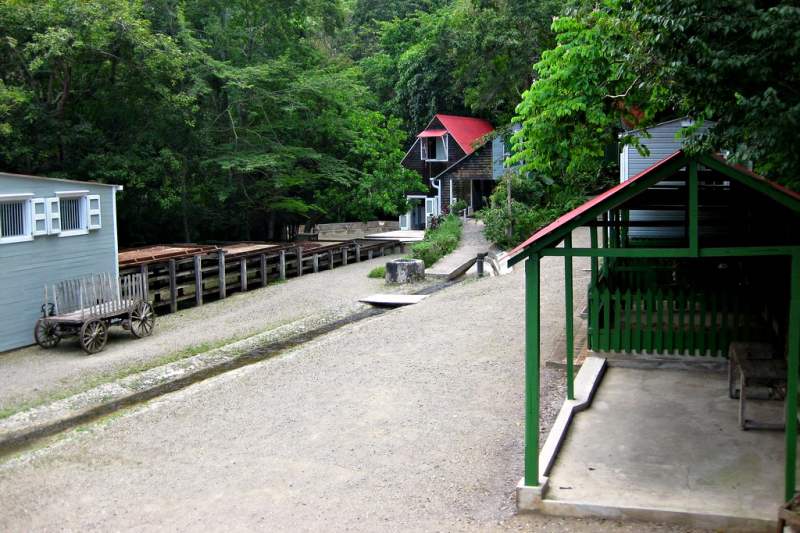
Photo: https://www.flickr.com/ -
The major plaza in the town of Ponce, Puerto Rico, is Plaza Las Delicias. The historic Parque de Bombas and Ponce Cathedral buildings are housed within the plaza, which is divided into two sections: Plaza Muoz Rivera on the north and Plaza Degetau on the south. The Ponce City Hall, the ancient Teatro Fox Delicias, the Banco de Crédito y Ahorro Ponceo and Banco de Ponce buildings, and the Armstrong-Poventud Residence are all located in the Ponce Historic Zone. The square was built around 1670 during the early Spanish colonization of Ponce. It is the city's most popular tourist attraction, with over a quarter-million tourists each year.
The Plaza is always bustling with events and visitor activities, as well as a variety of shops. There are also magnificent sculptures, statues, and attractive fountains to be found. The iconic Parque de Bombas, an architecturally stunning fire station peculiar to Puerto Rico, is also located in Plaza Las Delicias.
Numerous cultural events take place on the square. Among these are Carnaval Ponceño (celebrations: parades, parties, dances, music, food), Las Mañanitas (a traditional Mexican birthday song) and Fiestas Patronales (parades, games, artisans, amusement rides, regional food, and live entertainment). Many musical activities are held in conjunction with the Las Justas (Puerto Rico Athletic Games and Sports Festival) sporting event.
Location: Ponce, Puerto Rico
Timing: 10:00 am - 12:00 pm
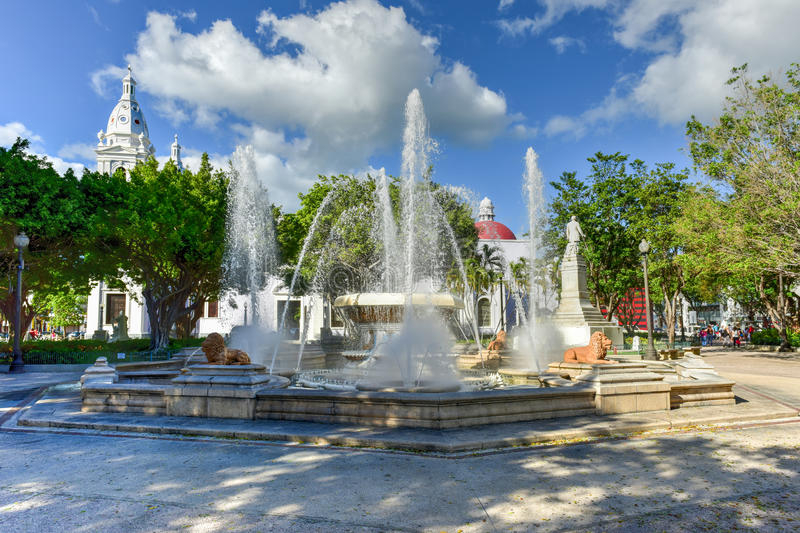
Photo: https://es.dreamstime.com/ 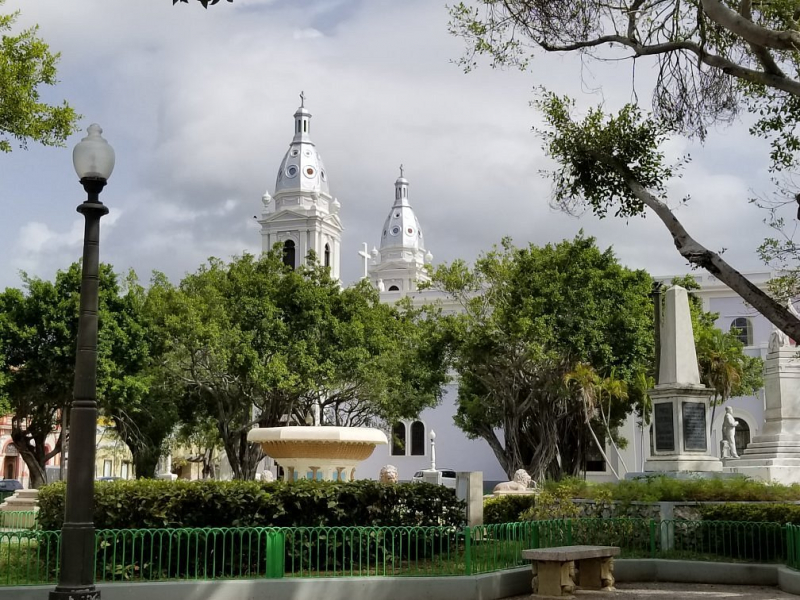
Photo: https://www.tripadvisor.es/ -
If you're in Ponce and enjoy antiques, gardens, handcrafted furniture, and breathtaking views, a visit to the Serralles Castle (Castillo Serralles) should be on your itinerary. Serralles Castle, perched on a ridge above the city of Ponce, served as the Serralles family's "summer home." Considered as one of the most beautiful historical sites in Puerto Rico, the Castillo Serralles Museum is a Spanish Revival-style mansion erected in the 1930s by the Serrallés family of DonQ rum. There is a butterfly nursery there, as well as the Viga Cross and a Japanese garden with benches, pagodas, and koi ponds.
This location is ideal for weddings, social gatherings, and other events. A permanent exhibition is on display, and guided tours are available in both English and Spanish.
The tour at the Castillo Serralles Museum was recently redesigned as an immersive experience that integrates virtual and augmented reality and takes guests through the history of rum in Puerto Rico as well as the development of Don Q's brand. It also offers visitors the opportunity to build their own cocktail during a mixology workshop, as well as a slew of other surprises that we won't reveal. The site also provides one of Ponce's most magnificent views.
Location: Ponce, Puerto Rico
Timing: 10:00 am - 4:00 pm
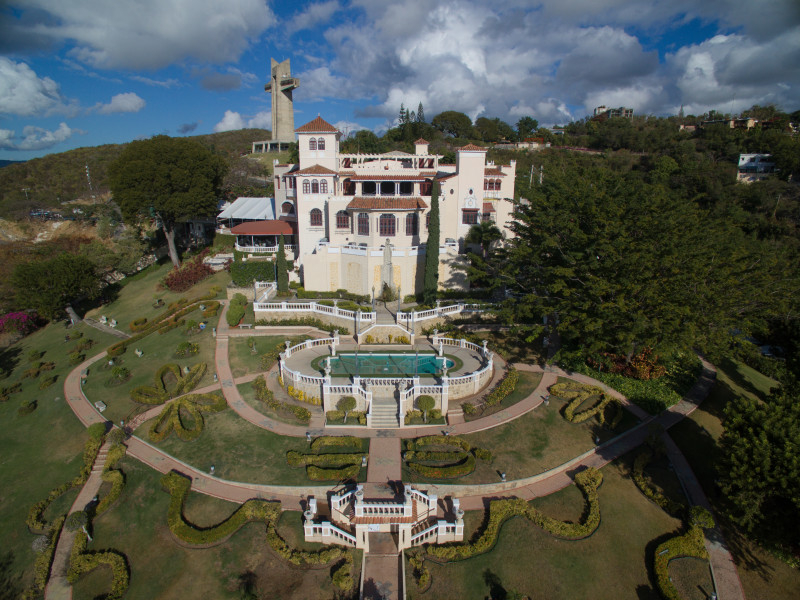
Photo: https://www.discoverpuertorico.com/ 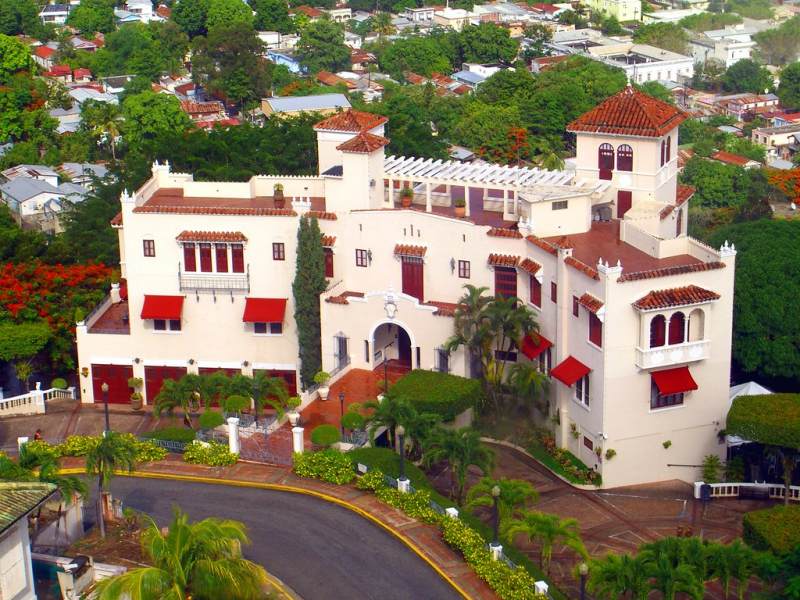
Photo: https://www.flickr.com/ -
The Catedral de Nuestra Señora de Guadalupe (English: Cathedral of Our Lady of Guadalupe or simply Ponce Cathedral) is the Roman Catholic Diocese of Ponce's cathedral, which is located in downtown Ponce, Puerto Rico. The cathedral is situated in the heart of Ponce's town square, Plaza Las Delicias, which is located in the Ponce Historic Zone. In 1984, the cathedral was added to the National Register of Historic Places because of its historical significance. It is where the Bishop of Ponce, Rubén González Medina, now resides.
The Cathedral was built in 1670 and has a long history. It has been ravaged by fires and earthquakes on multiple occasions. Its elaborate design sets it apart from Puerto Rico's other four cathedrals. It has a massive pipe organ that was played by Juan Morel Campos, a danza maestro and composer. It is designed in the neoclassical style architecturally. It is built on a cruciform pattern, with a huge dome at the crossroads. A main nave and two broad aisles are split by a sequence of eight arcades on the inside. Inside, there are two modest chapels. The front facade is adorned with two three-story square towers.
Location: Ponce, Puerto Rico
Timing: 9:00 am - 7:00 pm
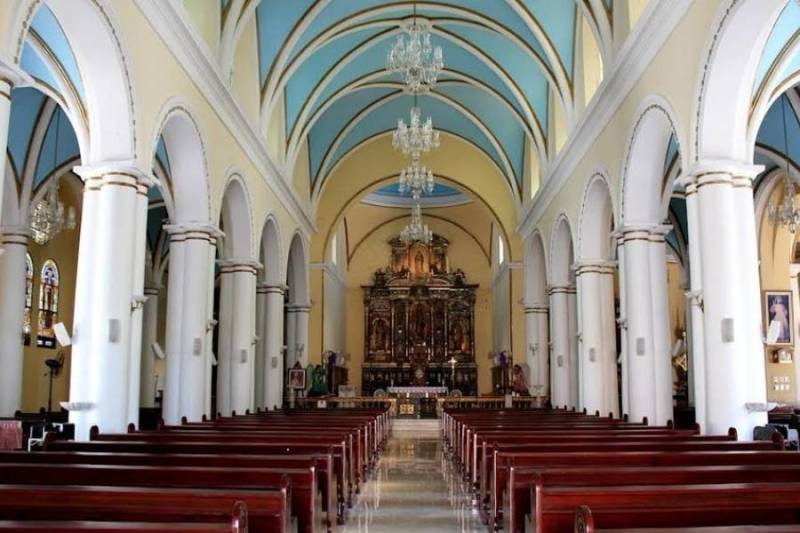
Photo: https://www.discoverpuertorico.com/ 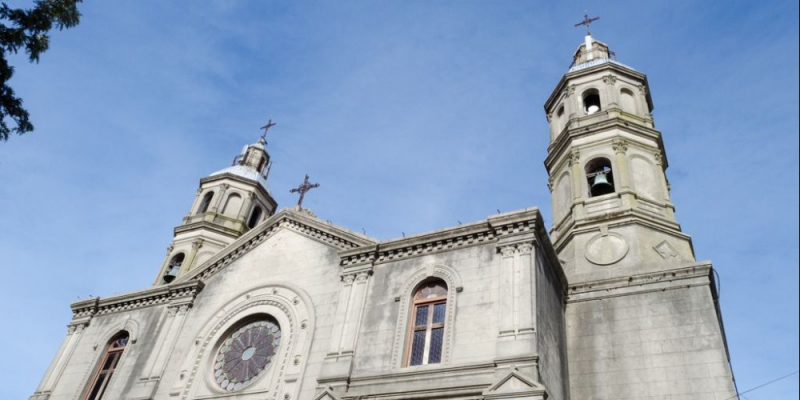
Photo: https://nomada.uy/






























